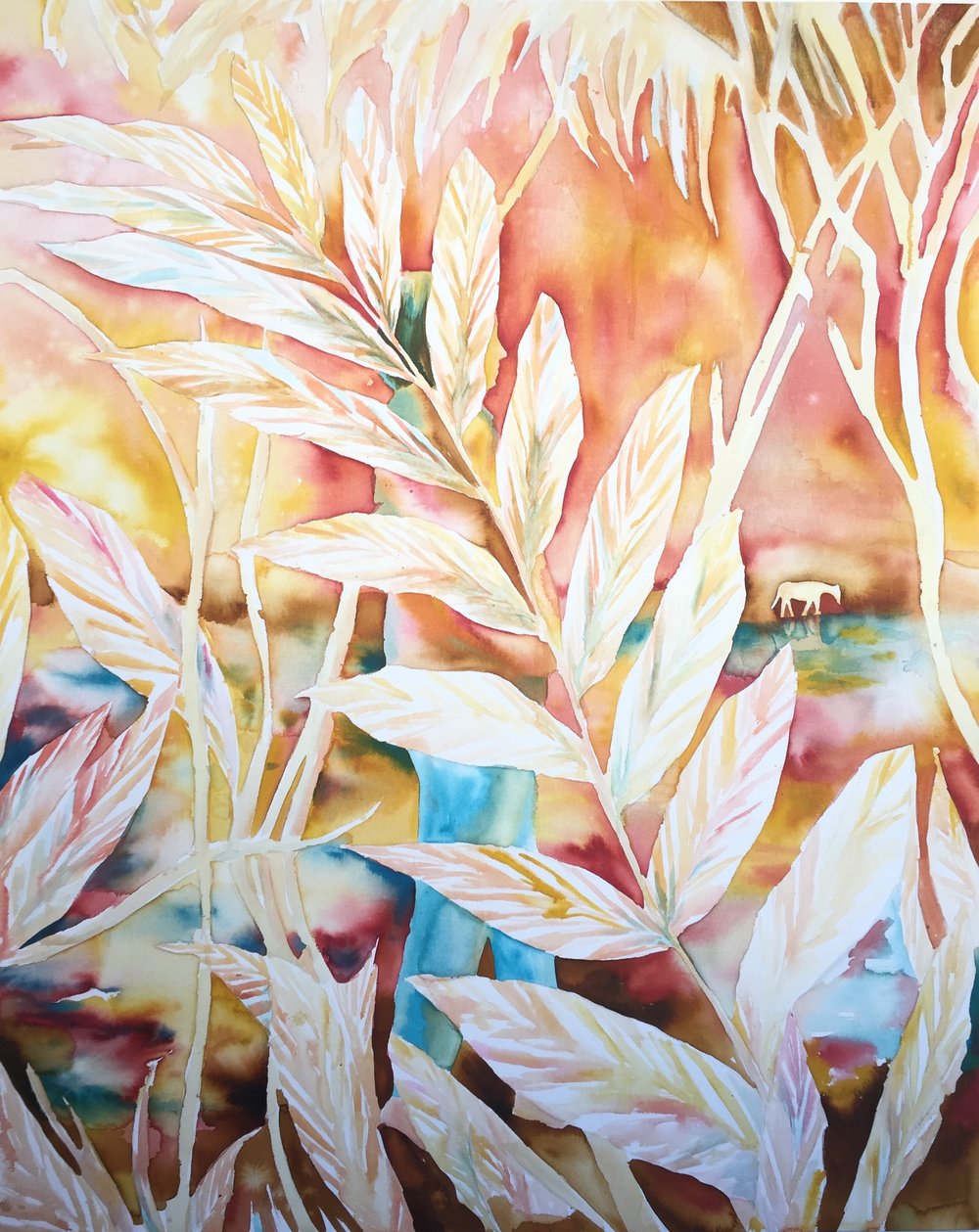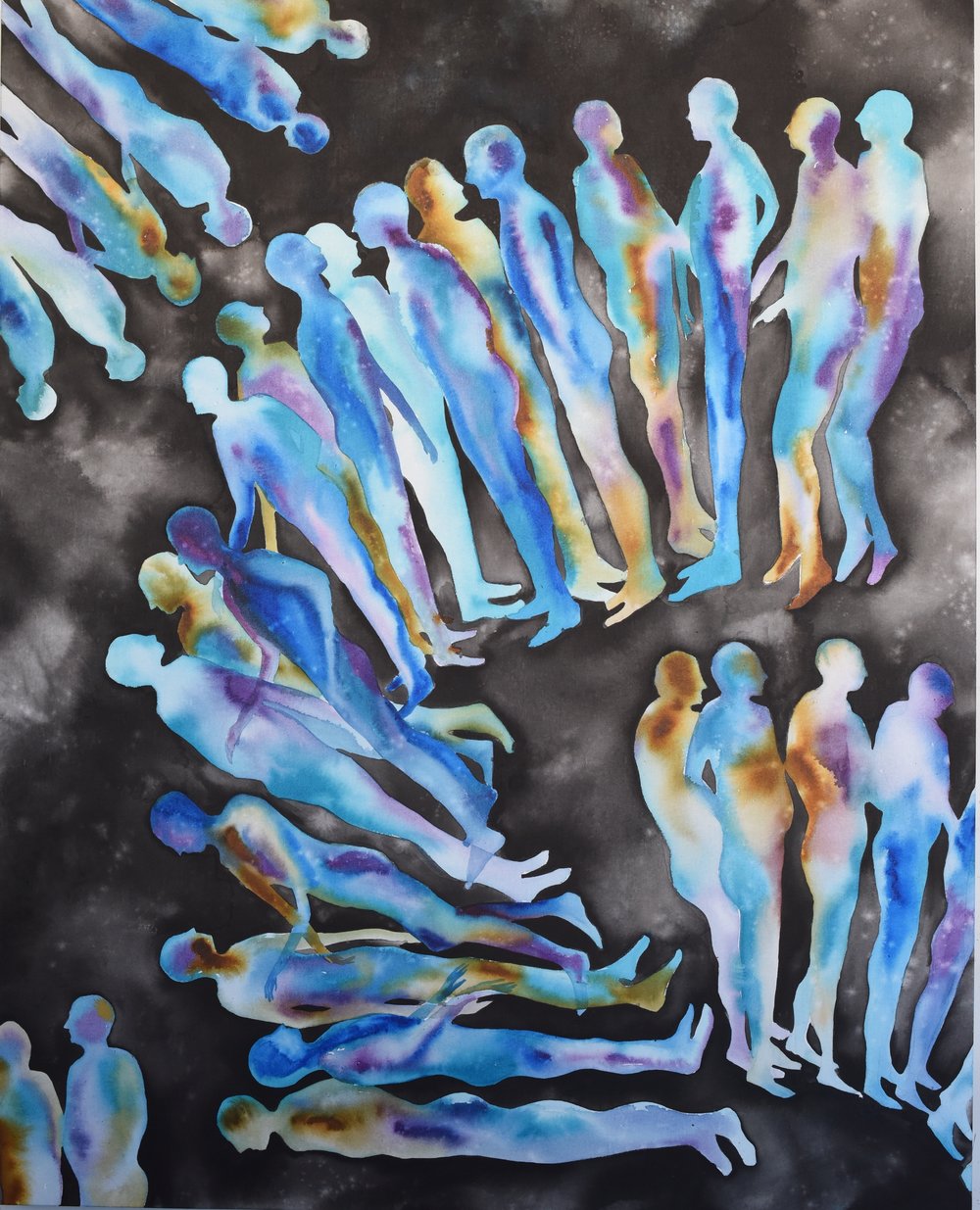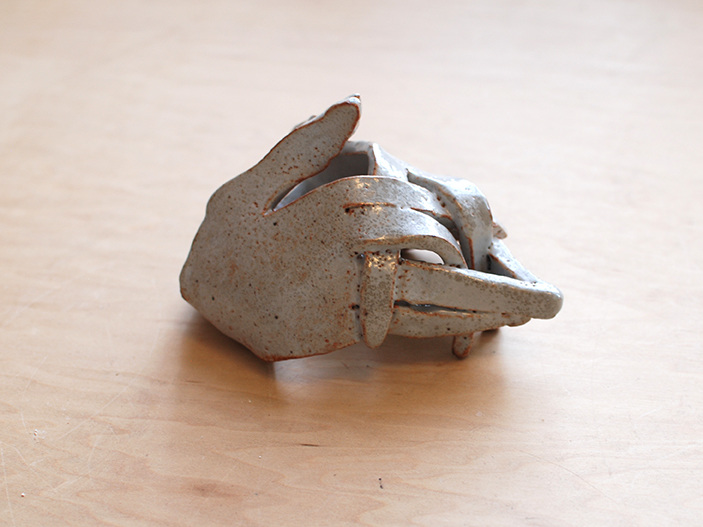For Michelle Blade’s solo exhibition, 'Gentle Existential', our lovely gallery assistant, Janna Alfred, asked a few questions about the artist’s personal mythology, her feminine voice within the artists’ painting practice, and overall inspirations in creating this newest body of work.
Janna Alfred: Where does the quote that you begin the exhibition statement come from? Was that your dream?
Michelle Blade: The quote is a text I wrote about a dream I had. I usually hesitate over putting words to my work and I wait to the last minute when writing statements, but when I had the dream I describe in the quote it was the literal piece I needed that pull everything together. The concept of gestalt, that parts do not make the whole, reminded me that being human is not a summary of our experiences but something else all together.

Why Can’t I Touch it? / Mirroring, 2016
Ceramic
JA: Your work seems to be openly feminine. Do you find this to be an essential element to your practice, or is it more a side effect of your particular methods of creating?
MB: Openly portraying a feminine voice within my painting practice has been something I’ve grown into, it hasn’t always been present. Within this show it was a conscious decision to bring a more personal, symbolic narrative to the work. For years I’ve made paintings inspired by the Romantic era. Artists like Caspar David Friedrich who were notorious for impressing their psychological state onto the landscapes they were depicting, created a heightened and very masculine atmosphere. For the work within Gentle Existential I wanted to take a different approach and create a body of work inspired by the empath, a person who soaks up the emotional environment around them and internalizes it.
At this point in my practice it feels natural and necessary to weave in personal symbolic elements after I have been working with themes of the communal for so long. Making paintings has always been the framework for how I interpret the world around me and so it’s essential to follow where it leads me if I want to sustain a curious, evolving and sustainable practice over the course of my life.

Big Creatures, 2016
Acrylic ink on canvas
4x5'
JA: When exploring your work, one can find ideas from psychology, philosophy, astrology, personal mythology and tarotology, amongst other schools of thought. How often do you come across other creatives and thinkers who are using similar and overlapping vernaculars? Do you feel like you have a community of people who think and work in ways cousin to your own?
MB: I do have a lovely community of curious thinkers and makers in my life. We overlap with some shared interests, but each person has their unique wheelhouse they bring to the table. Obsessions are shared, exchanged and adapted at times, which is one of the best perks of having a nourishing community. I think our mutual ambition and dedication to having a creative life is what ties us together most. Friendship between artists can be like an amazing support group for people that have chosen a hard road. We champion and remind each other of the magic in what we have chosen, which is a great thing to see embodied in a friend.

Drifting, 2016
Acrylic ink on canvas
4x5'
JA: How much is spirituality a part of your art practice? Has it always been that way?
MB: I’ve always been drawn to spirituality and learning about its numerous forms. I think it’s amazing the multitude of stories that have been created by humans to attempt to define the mysteries of existence and essentially marginalize our consciousness. It’s bittersweet. Within my work I try my best to present an image that does not claim facts but constantly skirts these spiritual territories, essentially depicting a space that is frozen at the apex of all those worlds; a world that is meaningless and also one chock full of mystery and absurdities.

The Los Angeles Coyote, 2016
Ceramic
JA: You have included Joan Brown’s name in the title of one of your paintings. Has she been particularly influential to you as an artist? If so, how?
MB: Recently her work and her life story has made an impression on me. Joan Brown and I in the Sun Room at Night, the painting you are referencing, is about trying to identify with some of the roles she played in her life as a mother, a spiritual being, a partner and a devote figurative artist. It’s challenging being a woman and a mother working in this field and I’m constantly searching for role models, especially female figurative painters, to help guide me. Joan Brown did it with grace and dedication and I wanted to pay homage to that.

Joan Brown and I in the Sun Room at Night, 2016
Acrylic ink on canvas
6x5’